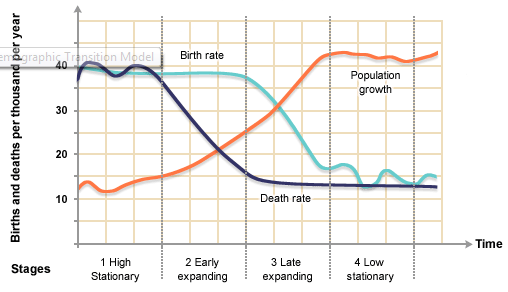“He, who has health, has hope, and he who has hope, has everything.”
Thomas Carlyle
Health care simply means care about your health. This care includes the necessary diagnosis, treatment, prevention, management of illness and the preservation of physical health paired with mental health through employing the services of health professionals and institutions. Healthcare has different levels on the basis of acuteness of illness of any health issue. These levels are primary, secondary and tertiary. At each level, you consult a health care practitioner to address the respective health issue.
With the advancement in every field of life, health sciences have also progressed well in treating various fatal diseases caused by bacteria and viruses. In addition, many new methods of diagnosis have been proposed that have made it easy to detect the primary health issue to resolve it. Facts have shown that the world mortality rate has been a crucially reduced in 21st century. This is the major achievement of advancement in health sciences and technology.

In the modern era, a person is offered with many options to take care of his health and his family’s health. One of the most dominant ways is select some health insurance plans through which you would be able to secure your health in more efficient way without posing any risk to your financial health also.
Healthcare deliverance at different levels:
Health management requires in-time required consultation of a health professional. These professionals can be from the field of psychology, medicine, nursing, physiotherapy, immunology and other allied health sciences. The choice of a health consultant depends upon the level of illness or injury.
Primary Health Care:
It is the first place and care center for consultation about the occurring symptoms due to some bacterial or viral attack. It primarily includes concerns about acute medical issues like sore muscle, fractured bone or skin rash etc. Primary care providers may be physicians, doctors, pharmacists and physician assistants. Here are given some of the basic primary prevention to protect from developing a disease or injury at the first place:
- Knowledge about important of healthy nutrition and regular exercise, effects of alcohol and tobacco intake.
- Regular check up to monitor risk factor for illness and respective immunization
- Avoiding potential hazards at home and work site.
Secondary Health Care:
It is the second tier of health system referred by a primary tier physician. It involves care a field specialist that helps in effective diagnosis and the required treatment. Secondary care provider focus on the specific disease or condition more keenly due to his/her field expertise for example oncologist works on cancer, cardiologist diagnose and treat heart associated problems and skin specialist focus on the skin sore and other acute skin problems and injuries. We are referred for the secondary health care when a primary tier specialist cannot handle the medical condition.
Tertiary Health Care:
The third level of health care system is called tertiary care. This level of specialized consultative care is referred to primary and secondary care providers when the issue becomes fatal for the health. It involves advanced diagnostic support services, specialized Intensive Care Units, and specialized medical personnel as its key features. Tertiary care requires specialized equipment and expertise such as varied surgeries and surgical instruments, ventilators, dialyzer and other complex treatments etc.
Quaternary health care:
It is an extension of tertiary health care procedures and treatments and it is more specialized and highly unusual. The facility of Quaternary care is not offered by a common health institute because it demands high expertise and highly specialized consultative care such as severely burnt surgeries, cancer last stage treatments that are uncommon. Thus for quaternary health care some specialized health center in developed countries are recommended.
To detect the level of illness and injury visit to different health care providers having expertise of different tiers is necessary. Sometimes it happens that a disease is considered mild in its nature but later it is proved to be fatal if not properly diagnosed. If you start self-medication without any professional consultancy then there are low chances of getting treated soon. A better way to care about your health issues is to get a health insurance.
Go for Health insurance:
A health insurance policy covers the medical and surgical expenses. It depends on the selected plan either you pay for medical expenses and then reimbursed from your company or make direct payment to the health care provider.
Health insurance services:
All types of health insurance plans offered include a same essential health care benefits. Thus, all the plans must cover the following items and benefits:
- Ambulatory services (health care service without being admitted to a hospital)
- Emergency services
- Hospitalization (such as surgery)
- Pregnancy, maternity, and newborn care.
- Counseling and psychotherapy services
- Prescription drugs
- Rehabilitative services
- Chronic disease management services
- Pediatric services
Types of Health insurance plans:
Some common health insurance plans that you will find in surrounding:
- Exclusive Provider Organization (EPO): the health care plan that provides health benefits if you consult the doctors, hospitals, specialists included in plan’s network.
- Health Maintenance Organization (HMO): A type of health insurance plan that often provide integrated care and focus on prevention and wellness. It usually limits the provision of services from physicians and doctors who work for or contract with the HMO and does not cover it out-of-network care with the exception of an emergency.
- Point of Service (POS): Pay low health insurance plans that require a referral from your primary care doctor to reach a specialized health care provider that belong to the plan’s network.
- Preferred Provider Organization (PPO): similar to point of service except that it does not require any referral from primary health care provider.
In 2015, an increased rate of accidents is observed due to terrorism and other serious issues of the modern century. Thus, having a health insurance plan would provide you standard health care at low charges and protect your financial health. Along with this financial protection you would also be able to get free preventive measures.
Necessary Preventive measures for health care:
No health disease beware you before its occurrence, specially a new viral or bacterial disease that never existed previously for example Ebola, dengue, etc. it is necessary for you to get timely protection against the disease by acquiring essential preventive measures.
Preventive measures for adults:
- Alcohol Misuse screening and counseling.
- Aspirin use to prevent cardiovascular disease for men and women of certain ages.
- Cholesterol, Diabetes, Blood Pressure screening for all adults.
- Colorectal Cancer screening for adults over 50.
- Immunization vaccines for all adults and children:
- Hepatitis A
- Hepatitis B
- Herpes Zoster
- Human Papillomavirus
- Influenza (Flu Shot)
- Measles, Mumps, Rubella
- Meningococcal
- Pneumococcal
- Tetanus, Diphtheria, Pertussis
- Varicella
- Obesity screening and counseling for all adults
- Sexually Transmitted Infection (STI) prevention counseling for adults at higher risk
- Syphilis screening for all adults at higher risk
- Tobacco Use screening for all adults and cessation interventions for tobacco users
Preventive measures for women:
- Gestational diabetes and Anemia screening on a routine basis for pregnant women
- Breast Cancer Genetic Test Counseling (BRCA) for women.
- HIV, Chlamydia and Cervical Cancer screening for younger and sexually active women.
- Domestic and interpersonal violence screening and counseling for all women.
- Hepatitis B screening for pregnant women at their first prenatal visit.
- Human Papillomavirus (HPV) DNA Test every 3 years for women with normal cytology results who are 30 or older.
- Osteoporosis screening for women over age 60 depending on risk factors.
- Rh Incompatibility screening for all pregnant women and follow-up testing for women at higher risk.
Preventive measures for children:
- Behavioral assessments for children at the following ages: 0 to 11 months, 1 to 4 years, 5 to 10 years, 11 to 14 years, 15 to 17 years.
- Developmental screening for children under age 3.
- Fluoride Chemoprevention supplements for children without fluoride in their water source.
- Gonorrhea preventive medication for the eyes of all newborns.
- Hearing and vision screening for all newborns.
- Height, Weight and Body Mass Index measurements for children at the following ages: 0 to 11 months, 1 to 4 years, 5 to 10 years, 11 to 14 years, 15 to 17 years.
- Hemoglobinopathies or sickle cell screening for newborns.
- Hypothyroidism screening for newborns.
- Iron supplements for children ages 6 to 12 months at risk for anemia.
- Lead screening for children at risk of exposure.
- Oral Health risk assessment for young children Ages: 0 to 11 months, 1 to 4 years, 5 to 10 years.
- Phenylketonuria (PKU) screening for this genetic disorder in newborns.
It has become very much difficult to avoid the risk of fatal diseases in this century because we are living in a world of technology and faced with serious kind of radiations and chemicals. The protective layer of ozone is damaging and we are also a victim of global warming that causes cancer and other skin issues. In order to lead a healthy life you must be serious about your health, and should take essential steps in this regard.








